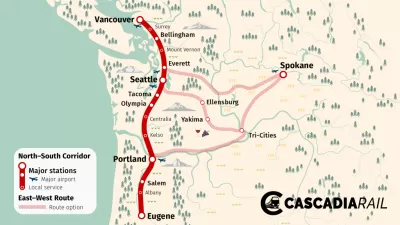In a photo essay on small homes and the people who love them, Sightline Fellow Alyse Nelson explains the attraction of compact living and the ways in which small homeowners are living it up by scaling down.
Motivated by a range of factors - from affordability to sustainability to connectivity - a diverse cross-section of residents are moving into "doll houses" that range from 800 square feet to less than 100 square feet — "a far cry from the 1000 square feet per person that has become the North American norm."
Denizens of the Pacific Nothwest have a particular affinity for the increasingly popular housing type. According to Nelson, "Seattle and Vancouver both adopted rules for backyard cottages in 2009. Portland has allowed accessory dwellings since 1998; but when the city relaxed size restrictions and waived development charges in 2010, it unleashed a renaissance in small home building."
Aside from the benefits to homeowners, such developments are a boon to their wider neighborhoods by "allowing schools to stay open, giving neighborhood businesses more customers, making transit service cost-effective, and saving on infrastructure costs." Plus, adds Nelson, "[i]nfilling neighborhoods with backyard cottages helps add more people to a neighborhood, without altering its character."
"The recession and housing crisis, combined with changing demographics, have led many of us to reevaluate what we want in a home," explains Nelson. "More and more folks are looking for homes within walking distance of jobs, stores, and transit—and have proven willing to trade square footage for a vibrant neighborhood. At the same time, millennials increasingly look for alternatives to the car; baby boomers have reached the age where they don’t need a big home in the ‘burbs; and more and more families are choosing to live in multi-generational households."
"Tiny houses are a great solution for all these needs."
FULL STORY: Living Large in Small Houses

Alabama: Trump Terminates Settlements for Black Communities Harmed By Raw Sewage
Trump deemed the landmark civil rights agreement “illegal DEI and environmental justice policy.”

Planetizen Federal Action Tracker
A weekly monitor of how Trump’s orders and actions are impacting planners and planning in America.

The 120 Year Old Tiny Home Villages That Sheltered San Francisco’s Earthquake Refugees
More than a century ago, San Francisco mobilized to house thousands of residents displaced by the 1906 earthquake. Could their strategy offer a model for the present?

In Both Crashes and Crime, Public Transportation is Far Safer than Driving
Contrary to popular assumptions, public transportation has far lower crash and crime rates than automobile travel. For safer communities, improve and encourage transit travel.

Report: Zoning Reforms Should Complement Nashville’s Ambitious Transit Plan
Without reform, restrictive zoning codes will limit the impact of the city’s planned transit expansion and could exclude some of the residents who depend on transit the most.

Judge Orders Release of Frozen IRA, IIJA Funding
The decision is a victory for environmental groups who charged that freezing funds for critical infrastructure and disaster response programs caused “real and irreparable harm” to communities.
Urban Design for Planners 1: Software Tools
This six-course series explores essential urban design concepts using open source software and equips planners with the tools they need to participate fully in the urban design process.
Planning for Universal Design
Learn the tools for implementing Universal Design in planning regulations.
Clanton & Associates, Inc.
Jessamine County Fiscal Court
Institute for Housing and Urban Development Studies (IHS)
City of Grandview
Harvard GSD Executive Education
Toledo-Lucas County Plan Commissions
Salt Lake City
NYU Wagner Graduate School of Public Service





























